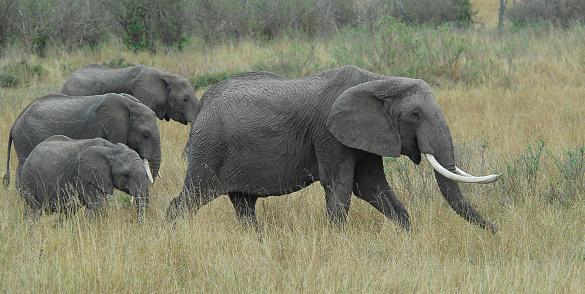-
Tips for becoming a good boxer - November 6, 2020
-
7 expert tips for making your hens night a memorable one - November 6, 2020
-
5 reasons to host your Christmas party on a cruise boat - November 6, 2020
-
What to do when you’re charged with a crime - November 6, 2020
-
Should you get one or multiple dogs? Here’s all you need to know - November 3, 2020
-
A Guide: How to Build Your Very Own Magic Mirror - February 14, 2019
-
Our Top Inspirational Baseball Stars - November 24, 2018
-
Five Tech Tools That Will Help You Turn Your Blog into a Business - November 24, 2018
-
How to Indulge on Vacation without Expanding Your Waist - November 9, 2018
-
5 Strategies for Businesses to Appeal to Today’s Increasingly Mobile-Crazed Customers - November 9, 2018
African Elephants ‘Suffer Worst Decline In 25 Years’
Released at a United Nations conference on the global wildlife trade, the report put Africa’s total elephant population at around 415,000, a decline of around 111,000 over the past decade.
Advertisement
Poaching is the main cause for the elephant population to have declined by 1,11,000 over the past 10 years in Africa, according to the International Union for Conservation of Nature.
However the authors say that long-term issues such as the loss of habitat also pose a significant threat.
The IUCN, which drew on a range of estimates and census data, said it now had a fairly accurate count of 415,000 elephants in Africa in the areas where extensive surveys could be taken, down from over 500,000 in 2006.
With over 70 per cent of the estimated African elephants, Southern Africa has by far the largest number of the species – approximately 293,000 elephants in systematically surveyed areas, followed by Eastern Africa with an estimated 86,000 and Central Africa with just 24,000.
Gabon and Congo now hold Africa’s most important forest elephant populations but both have been affected by heavy poaching in recent years, as have the forest and savannah populations of Cameroon.
On Saturday, conservationists at an worldwide wildlife conference in South Africa said poaching syndicates shipped large amounts of African elephant ivory a year ago despite global calls to dismantle the trafficking networks that often collude with corrupt officials.
Eastern Africa – the region most affected by poaching – has experienced an nearly 50% elephant population reduction, largely attributed to an over 60% decline in Tanzania’s elephant population. Dr. Thouless also pointed out some positives, “The number of elephants in South Africa, Namibia and Uganda is on the rise”. The savanna populations of Chad have taken heavy losses and those in the Central African Republic have nearly completely disappeared.
“It is now up to the CITES parties to carry that momentum forward (and) support the majority of African elephant range countries who are calling for closure of domestic markets”, she said.
The IUCN reported there were a number of regions where systematic surveys could not be taken, making it hard to report on what was happening to elephants in countries such as South Sudan, Liberia and savannah areas of the Central African Republic.
A group of elephants are seen at a park in Knysna, South Africa, on July 12, 1999. There is still uncertainty about the size of the elephant population in the KAZA trans-frontier conservation area – the single largest population on the continent – and it remains critical to undertake a coordinated survey of this population.
The conservation network Traffic said the global trade in ivory continued unabated in 2015, and that raw ivory shipments weighing more than 100kg are becoming more common.
Advertisement
The world’s biggest conference on the global wildlife trade got underway Saturday in Johannesburg, but African countries lashed out at Western charities for “dictating” how they should protect their elephants.




























